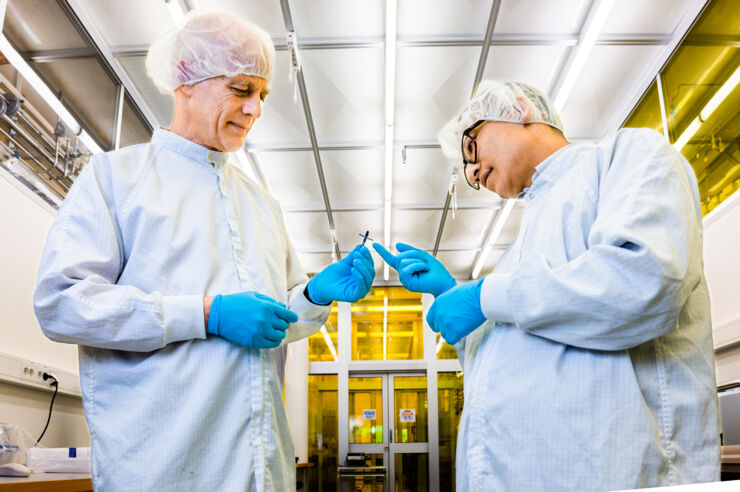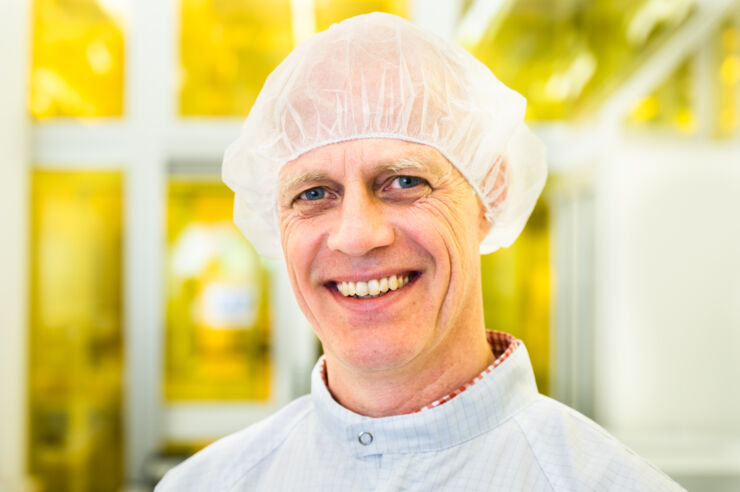博文
科学家研制出世界上第一个用木头制成的晶体管
||
科学家研制出世界上第一个用木头制成的晶体管
诸平





Fig . 5 The components of the wood transistor. THOR BALKHED
据瑞典林雪平大学(Linköping University, Norrköping, Sweden)2023年5月5日提供的消息,科学家研制出世界上第一个用木头制成的晶体管(Scientists Develop the World’s First Transistor Made of Wood)。在木基电化学晶体管(wood-based electrochemical transistor)中进行电流的调制。
来自瑞典林雪平大学和瑞典皇家理工学院(KTH Royal Institute of Technology, Stockholm, Sweden)的研究人员组成的研究小组,创造了世界上第一个用木头制成的晶体管。他们的研究结果于2023年4月23日已经在《美国国家科学院院刊》(Proceedings of the National Academy of Sciences)网站发表——Van Chinh Tran, Gabriella G. Mastantuoni, Marzieh Zabihipour, Lengwan Li, Lars Berglund, Magnus Berggren, Qi Zhou, Isak Engquist. Electrical current modulation in wood electrochemical transistor. Proceedings of the National Academy of Sciences, April 24, 2023. 120 (18): e2218380120. DOI: 10.1073/pnas.2218380120. https://doi.org/10.1073/pnas.2218380120. 此研究成果为木质电子产品(wood-based electronics)的发展和电子植物(electronic plants)的控制开辟了新的机会。
晶体管是近一个世纪前的一项革命性发明,常被视为人类历史上最重要的发明之一,与电话、灯泡和自行车齐名。今天,它们在现代电子设备中起着至关重要的作用,并且是在纳米级制造的。晶体管作为控制装置,调节电流的流动,也可以作为电源开关。
林雪平大学的研究人员与皇家理工学院的同事们一起开发出了世界上第一个用木头制成的晶体管。
“我们提出了一个前所未有的原则。是的,木质晶体管速度缓慢且体积庞大,但它确实有效,并且具有巨大的发展潜力,”林雪平大学有机电子实验室(Laboratory for Organic Electronics at Linköping University)的高级副教授伊萨克·恩奎斯特(Isak Engquist,Figs. 3, 4)说。
在之前的试验中,由木头制成的晶体管只能调节离子传输。当离子耗尽时,晶体管就停止工作。然而,林雪平大学研究人员开发的晶体管可以连续工作并调节电流而不会变质。
研究人员使用轻木(balsa wood)来制造他们的晶体管,因为所涉及的技术需要一种均匀结构的无颗粒木材。他们移除了木质素,只留下长纤维素纤维和木质素原来所在的通道。
然后在这些通道中填充一种称为PEDOT:PSS的导电塑料或聚合物,从而形成导电木质材料(electrically conductive wood material)。
研究人员利用这种材料制造了木制晶体管,并证明它能够调节电流,并在选定的输出水平上提供连续功能。它也可以开关电源,虽然有一定的延迟,关闭它需要大约一秒钟;打开需要大约五秒钟。
可能的应用包括调控电子植物(electronic plants),这是林雪平大学另一个强有力的研究领域。这种晶体管沟道如此之大的一个优点是,它可以承受比普通有机晶体管更高的电流,这对未来的某些应用可能很重要。但伊萨克·恩奎斯特想要强调的是:“我们创造木质晶体管并没有考虑到任何特定的应用。我们这么做是因为我们有这个能力。这是基础研究,表明这是可能的,我们希望它能激发进一步的研究,从而在未来得到应用,”伊萨克·恩奎斯特说。
这项研究得到了克努特和爱丽丝·瓦伦堡基金会(Knut and Alice Wallenberg Foundation)通过瓦伦堡木质科学中心(Wallenberg Wood Science Center)和卡尔-埃里克·奥尼斯乔基金会(Karl-Erik Önnesjö Foundation)的资助。
上述介绍,仅供参考。欲了解更多信息,敬请注意浏览原文或者相关报道。
The orthotropic 3D microstructure has recently promoted wood as a template for applications in wood-based energy and electronic devices. Different varieties of electroconductive wood are widely reported; however, modulating the wood’s electrical conductivity without changing its chemical composition has not been done and remains challenging. In this work, we present an approach to preparing conductive wood (CW), in which the electrical conductivity can be modulated using an external potential. This has resulted in a transistor where all three terminals are made of conductive wood and which can be operated continuously at the selected conductivity without being limited by, e.g., saturation effects. We expect this device and concept will be a stepping stone for the development of wood-based electrical components.
The nature of mass transport in plants has recently inspired the development of low-cost and sustainable wood-based electronics. Herein, we report a wood electrochemical transistor (WECT) where all three electrodes are fully made of conductive wood (CW). The CW is prepared using a two-step strategy of wood delignification followed by wood amalgamation with a mixed electron-ion conducting polymer, poly(3,4-ethylenedioxythiophene)–polystyrene sulfonate (PEDOT:PSS). The modified wood has an electrical conductivity of up to 69 Sm−1 induced by the formation of PEDOT:PSS microstructures inside the wood 3D scaffold. CW is then used to fabricate the WECT, which is capable of modulating an electrical current in a porous and thick transistor channel (1 mm) with an on/off ratio of 50. The device shows a good response to gate voltage modulation and exhibits dynamic switching properties similar to those of an organic electrochemical transistor. This wood-based device and the proposed working principle demonstrate the possibility to incorporate active electronic functionality into the wood, suggesting different types of bio-based electronic devices.
https://blog.sciencenet.cn/blog-212210-1387262.html
上一篇:发现自身免疫性疾病会影响大约十分之一的人
下一篇:纳米级突破——单分子阀门